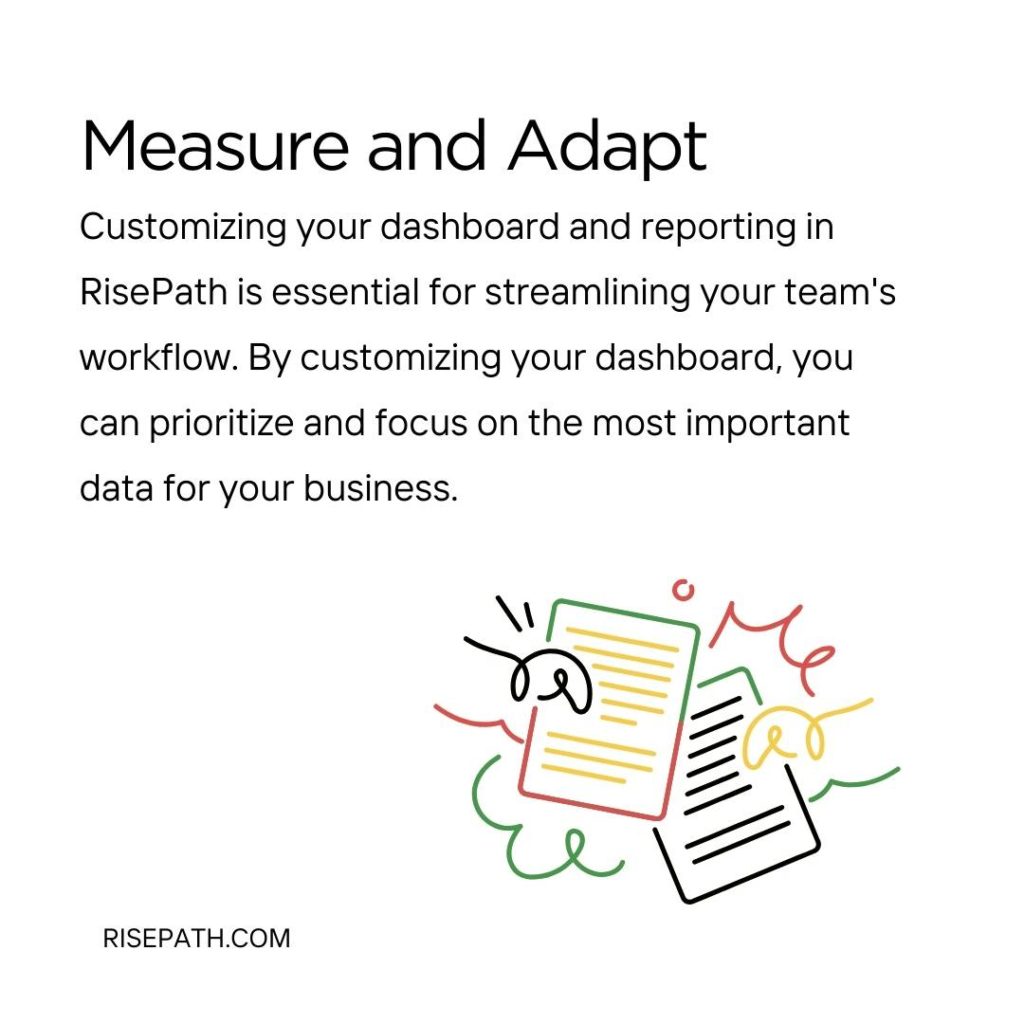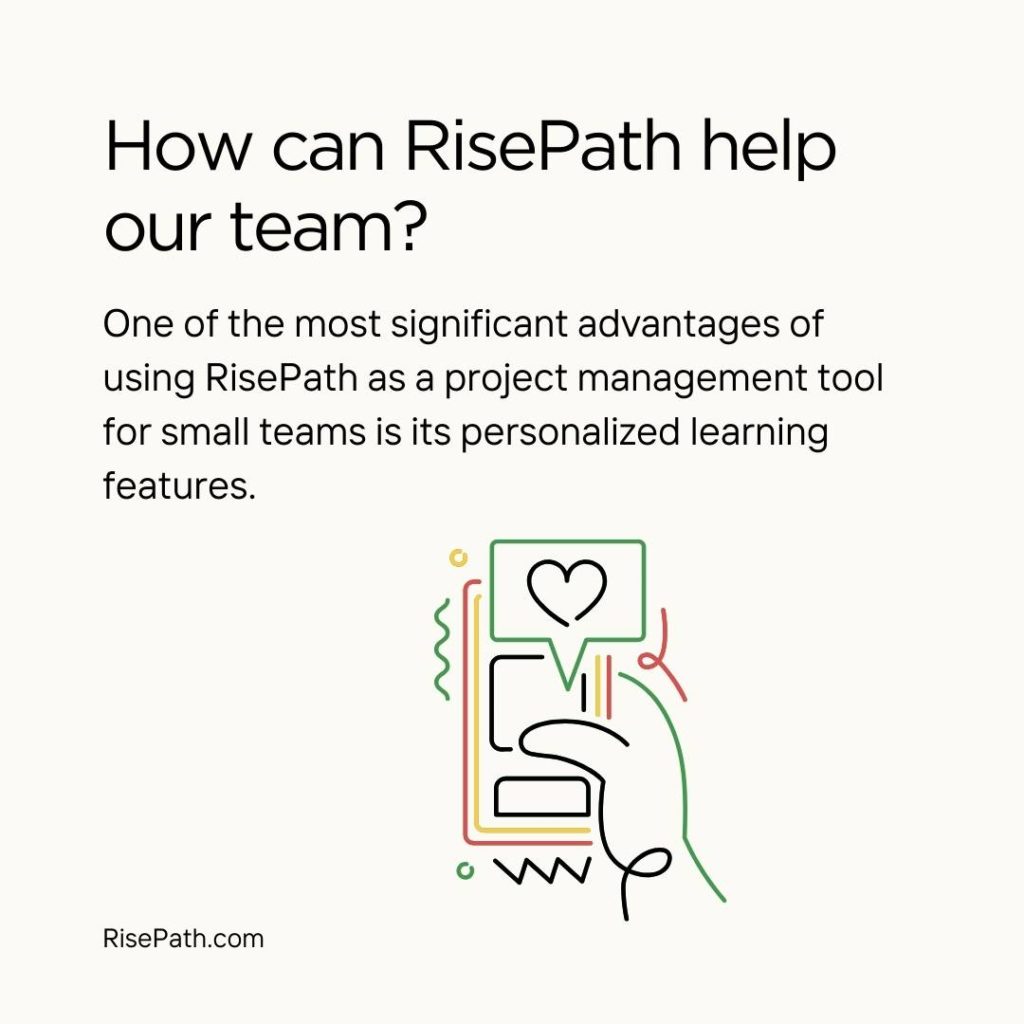In today’s business world, customer relationship management (CRM) has become crucial for success. However, some companies still overlook the importance of having a CRM system in place, putting themselves at a disadvantage against their competition.
In this blog post, we will discuss the nine risks of not having a CRM and how it can affect your business growth, profitability and customer satisfaction. It’s time to understand why your competition is ahead and take the necessary steps to catch up.
Risk 1 Lost Opportunities
Life is full of opportunities, some more obvious than others. Sometimes, the most significant opportunities are the ones we overlook or fail to seize. It’s easy to get caught up in daily routines, and we may not recognize opportunities when they present themselves.
Fear and doubts are often responsible for holding us back from taking risks, but it’s crucial to push past those fears and take advantage of the chances that come our way.
Reflecting on missed opportunities can help us learn and improve, and it is essential to embrace new opportunities that arise and be open to where they may lead us.
Risk 1.2 Missed Leads
Missed leads could translate into lost revenue for any business. Therefore, it’s essential to track and analyze missed leads to understand the reasons behind them. By doing this, businesses can identify areas of improvement and implement strategies that can improve their conversion rates.
In many cases, poor lead management is the culprit for missed opportunities. However, businesses can alleviate this by taking proactive steps such as imparting relevant training to sales teams and implementing effective lead nurturing processes.
Risk 1.2 No Follow-up
A lack of follow-up can be detrimental to any business. Failing to follow-up can result in missed opportunities and potential revenue loss. Moreover, it can damage professional relationships, causing a loss of trust from clients and partners.
Also Read: RisePath The Most Simple & Effective Project Management Software
Neglecting to follow-up after a meeting can cause you to be forgotten by potential collaborators, leading to a loss of future opportunities. To avoid these risks, it’s crucial to make follow-up a priority and implement effective communication strategies to maintain relationships with clients and partners.
Risk 2 Poor Customer Service
Customer service is an essential part of any business, and poor customer service can lead to significant consequences. Inadequate training of customer service agents can result in frustration for both customers and employees, ultimately resulting in a loss of business and damage to a company’s reputation.
Long wait times on hold or slow response to inquiries can contribute to a negative customer experience, causing customers to seek out competitors who can provide better service. In addition, an apathetic attitude towards customers can create a sense of disconnect and push customers away from a company.
Therefore, it is crucial for businesses to invest in customer service training and prioritize communication with their customers.
Risk 2.1 Ineffective Communication
Ineffective communication can cause a wide range of problems, from misunderstandings and conflicts to missed opportunities and failed projects. It can create stress and anxiety in individuals, and damage personal and professional relationships.
To overcome these risks, individuals must practice active listening and ensure clarity in their messages. By doing so, they can avoid misunderstandings, build stronger relationships, and achieve greater success in their personal and professional lives.
Risk 2.2 Lack of Personalization
Tailoring marketing messages to individual customers is essential in creating a unique and engaging customer experience. Without personalization, businesses risk sending irrelevant or even annoying messages that customers are likely to ignore or unsubscribe from.
Additionally, a lack of personalization can lead to missed sales opportunities as customers may not feel connected to the brand or its products.
Therefore, it’s crucial for businesses to implement personalization strategies that make customers feel valued and understood, ultimately leading to increased engagement and sales.
Risk 3 Inefficient Sales Process
The sales process is critical to the success of any business, but there are many risks associated with an inefficient sales process. One common risk is unclear sales goals and objectives, which can cause confusion and hinder productivity.
The sales team also needs to communicate effectively with other departments to ensure smooth operations, but a lack of communication can lead to delays and missed opportunities. Outdated sales strategies and technologies can also hinder the effectiveness of the sales process.
Finally, failing to regularly evaluate and adjust the sales process can result in ongoing inefficiencies that impact the bottom line. Therefore, it’s crucial to address these risks and ensure that the sales process is efficient, effective, and adaptable to changing circumstances.
Risk 3.1 Manual Data Entry
Manual data entry is a necessary task for many businesses, but it can be a tedious and time-consuming process. It requires a high level of accuracy, which can be challenging for humans to maintain.
Also Read: Top Scheduling project management tool
Manual data entry also poses a risk for errors, such as typos and transpositions. Therefore, it is crucial to have a verification process in place to ensure that the data entered is accurate. This can help minimize errors and ensure that the data being used for important business decisions is reliable.
Risk 3.2 Lack of Sales Automation
Manual sales processes can be time-consuming and can hinder productivity. Without automated sales processes, businesses may struggle to capture and manage leads efficiently. This can lead to missed opportunities and potential revenue loss. Additionally, a lack of sales automation can make it difficult to generate consistent sales data and reporting.
Automated sales processes can increase accuracy, providing businesses with more reliable data, and enabling them to forecast more accurately. Hence, it’s crucial for businesses to invest in sales automation tools and resources for greater efficiency, productivity, and success.
Risk 4 Limited Business Insights
In today’s competitive business landscape, data analysis is critical towards achieving growth and profitability. Insufficient data analysis can hinder decision-making and limit the business’s ability to identify new opportunities.
Accurate and relevant data is also necessary to make informed decisions and drive growth. To establish a data-driven culture, businesses should invest in analytics capabilities, regular reporting, and analysis. In doing so, businesses can identify potential risks and opportunities promptly, stay ahead of their competitors, and make informed decisions to drive success.
Risk 4.1 No Sales Reports/Analytics
As a business owner, the absence of sales reports and analytics can be detrimental to your success. Without this crucial data, it’s difficult to track the progress of your business or determine which products are performing well in the market.
This can lead to missed opportunities, poor decision-making, and a lack of direction. Sales reports and analytics are essential in forecasting future trends and making informed business strategies.
By having access to relevant data, you can make better decisions, adjust your approach, and stay ahead of the competition.
Risk 4.2 Inability to Identify Trends
The inability to identify trends can create significant risks for any business. Failing to track trends can lead to missed opportunities for growth, innovation, and keeping up with an ever-changing market. Businesses need to continuously monitor trends to stay relevant and adapt their offerings to changing customer demands and preferences.
Without recognizing trends, businesses can poorly allocate resources and make suboptimal decisions, ultimately leading to missed business objectives and profitability.
Therefore, businesses need to invest in monitoring and analyzing trends to gain a competitive advantage and stay ahead in the market.
Risk 5 Difficulty Managing Customer Data
Effective management of customer data is crucial for any business. The first step towards this is to organize the data with easily accessible spreadsheets or databases. However, these methods may not be the most efficient for larger businesses.
Therefore, it’s essential to consider investing in a customer relationship management (CRM) system to streamline data management. Businesses should also focus on data quality by regularly updating, cleaning, and deduplicating customer information.
This ensures accuracy and consistency in the data. Training employees on proper data entry and management techniques is equally important to maintain the quality of customer data.
Risk 5.1 Data Silos
The use of different systems to store information in different departments of an organization can lead to data silos. These silos can result in redundant data, inconsistencies, and a lack of transparency, all of which negatively impact the decision-making process.
To address this challenge, a data integration strategy can be implemented to consolidate different sources of data and facilitate its sharing throughout the organization.
Such an approach can also enhance communication and collaboration between departments, foster a culture of data-driven decisions, and ultimately help businesses stay ahead of their competition.
Risk 5.2 Data Inaccuracies
Inaccuracy in data can lead to grave consequences, including making decisions based on incorrect information, financial losses, legal repercussions, and damage to the company’s reputation. Human errors, outdated systems, and faulty processes can often cause data inaccuracies. It is therefore essential to conduct regular data quality checks and clean-ups to reduce this risk. Through proactive measures, businesses can ensure that their data is reliable, and decisions are based on accurate and consistent information.
Risk 6 Decreased Productivity
Decreased productivity can be a significant risk for businesses, leading to financial losses and missed opportunities. There are several causes of decreased productivity, including burnout, distractions, and inefficient work processes.
However, employers have the power to address these challenges by offering training, flexible work arrangements, and incentives for high performance. Meanwhile, individuals can take steps to improve their productivity by prioritizing tasks, using time management tools, and taking breaks to avoid burnout.
By working together and taking proactive measures, businesses and individuals can reduce risks and boost productivity, ultimately leading to increased success and growth.
Risk 6.1 Time-Consuming Tasks
There are several tasks in both personal and professional settings that can be very time-consuming. Completing paperwork, cleaning large areas, organizing files and folders, and cooking a meal from scratch are all examples of such tasks.
These tasks require attention to detail and can take up a significant portion of your day. It’s important to prioritize and allocate time efficiently to ensure that these tasks don’t overwhelm you and take away from more important responsibilities.
By being mindful and seeking ways to streamline these tasks, you can save time and focus on more productive areas of your life.
Risk 6.2 Limited Collaboration
Limited collaboration in a team can pose significant risks to a project’s success. When team members work in silos, it can result in miscommunication, duplication of effort, and inefficient allocation of resources.

Furthermore, team members who lack collaboration skills may face challenges working cohesively with others and experience delays in completing tasks. In addition to these challenges, a lack of collaboration can also lead to missed opportunities for innovation and growth.
Therefore, it’s essential to foster a collaborative culture within teams to ensure effective communication, efficient resource allocation, and ultimately drive success.
Risk 7 Increased Costs
Businesses face increased costs from various external factors, such as inflation or changes in regulations, that can impact their operational expenses. High operational costs can harm a business’s profitability and sustainability.
Companies may attempt to offset these costs by increasing prices or finding operational efficiencies. It is vital to address these increased costs as failing to do so can lead to financial challenges and even bankruptcy for businesses.
Therefore, companies should proactively monitor and mitigate risks related to increased costs to stay ahead of their competition.
Risk 7.1 Overlapping Tools
Overlapping tools are versatile and widely used in various industries to improve precision and efficiency. In the construction industry, these tools aid in ensuring accurate measurements and alignment of structures.
Graphic designers and image processors also benefit from overlapping tools in locating overlapping regions in images or graphics. In the field of genetics, overlapping tools play a significant role in identifying overlapping genes and their functions.
Similarly, machine learning experts utilize overlapping tools to enhance accuracy in object detection and segmentation, which is crucial for their work. Therefore, overlapping tools continue to be crucial for many industries, providing valuable assistance in their respective fields.
Risk 7.2 Need for Multiple Systems
Managing complex data can be a daunting task that requires multiple systems with different functionalities. While this may seem overwhelming, using multiple systems can actually reduce the risk of data loss and system failure.
Incorporating various systems also enhances productivity and increases efficiency, as each system can be utilized for its specific strengths.
Furthermore, having multiple systems allows for customization and flexibility in data processing, ensuring that businesses can adapt to changing data needs and maintain a competitive edge.
Risk 8 Lack of Scalability
It’s not uncommon for businesses to experience scalability issues, which can be caused by limited infrastructure or programming architecture. These issues can result in decreased performance, downtime, and increased costs.
Thankfully, businesses can address these concerns by implementing cloud solutions or using distributed systems that can handle an increasing volume of traffic.
Failure to address scalability concerns can hinder business growth and limit the ability to handle increasing demands, making it essential to prioritize and adapt to the changing needs of the organization.
Risk 8.1 Inability to Grow
Growth is essential for any business to succeed in today’s competitive landscape. However, there are various risks that can hinder growth and limit business expansion.
One risk is the lack of clear goals and objectives, which can result in a lack of direction and focus. Inadequate resources or funding can also restrict business growth, as it can limit the ability to invest in new technologies, hire more employees, or expand into new markets.
Additionally, a lack of willingness to take risks can also lead to missed opportunities and restricted growth.
Lastly, poor management or decision-making can impede the ability to grow and achieve success. It’s crucial for businesses to identify and mitigate these risks to stay ahead of their competition and achieve their growth objectives.
Risk 8.2 Difficulty Expanding to New Markets
Expanding to new markets can be a daunting task, especially in foreign territories where the cultural and regulatory landscape can be vastly different. To mitigate the risks associated with entering a new market, it’s important to conduct market research to identify potential challenges early on.
Lack of cultural understanding and language barriers can pose significant obstacles, and compliance and regulatory issues can vary widely from country to country.
Partnering with a local company or hiring employees from the target market can help navigate these challenges and increase the chances of success.
Risk 9 Higher Churn Rate
A high churn rate can indicate that customers are dissatisfied with a company’s products or services. Factors such as high prices and poor customer service may contribute to such dissatisfaction.
Furthermore, frequent changes in management and leadership can also lead to a higher churn rate. To mitigate this, it is crucial for businesses to focus on offering personalized experiences and rewards to their customers. Such efforts can help to build loyalty and reduce churn rate.
Risk 9.1 Less Customer Retention
Maintaining customer loyalty is essential for businesses to succeed, and there are various reasons why customers may stop doing business with a company. Poor customer service is a leading factor, as customers expect timely and efficient service.
Additionally, lack of product quality can also lead to a lack of customer retention. Businesses need to focus on rewarding loyal customers, as failure to do so can also contribute to a decrease in customer retention.
Lastly, competition from other brands can be a significant risk factor that businesses need to address to maintain their customer base.
Risk 9.2 Unhappy Customers
Unhappy customers can be detrimental to the success of a business, especially if their concerns are left unaddressed. The causes of customer dissatisfaction can range from poor customer service to lack of product quality or features.
To maintain a positive reputation and boost sales, it is essential to promptly and effectively address the concerns of unhappy customers.
Providing personalized solutions can enhance customer loyalty and satisfaction, but active listening and empathy are also crucial skills in understanding and resolving their issues. With these efforts, businesses can turn unhappy customers into loyal advocates.
Is Your Business Losing to Competitors Without a CRM?
Businesses today operate in a highly competitive environment where efficiency and timely decision-making can make or break sales. A CRM system can provide a one-stop solution for managing customer relationships, sales data, and revenue forecasting.
It enables businesses to streamline their operations, save time and resources, and improve communication with customers. Failure to adopt this technology can result in missed sales opportunities, a lack of customer loyalty and market share, and a competitive disadvantage.
By implementing a CRM, businesses can stay ahead of the curve and make informed decisions that drive growth and profitability.
Frequently Asked Questions
How does a CRM help businesses stay ahead of their competition?
Implementing a CRM system in your business can have significant benefits that contribute to its growth and profitability. By improving the customer experience, businesses can boost customer loyalty and gain more repeat business.
Furthermore, CRM helps track and analyze customer data, allowing businesses to create effective marketing campaigns targeted towards specific customer groups.
The system also fosters collaboration among team members, leading to increased efficiency and productivity.
Finally, CRM provides real-time insights into customer needs, enabling businesses to stay ahead of the competition by adapting and improving their offerings. It’s crucial for businesses to leverage these benefits by adopting a CRM system to remain competitive and achieve their growth objectives.
Can businesses use free or low-cost CRMs instead of investing in expensive options?
Small businesses can benefit from utilizing free or low-cost CRMs to manage their sales process and communication with clients.
These options may lack some advanced features of more expensive CRMs, but they can still be effective for businesses with smaller customer bases.
Choosing low-cost or free CRMs can save businesses money while ensuring that customer interactions are organized and effective.
Additionally, some free CRMs even offer integration with third-party tools, providing access to advanced features without extra cost. Embracing these options can help small businesses stay competitive without breaking the bank.
Conclusion
In conclusion, businesses face multiple risks when they do not have a CRM system in place. These risks include missed opportunities, poor customer service, an inefficient sales process, limited business insights, difficulty managing customer data, decreased productivity, increased costs, and a lack of scalability.
Additionally, businesses may struggle to expand to new markets, experience a higher churn rate, and encounter challenges when trying to retain customers. Without a CRM, businesses may be losing to their competitors who have already adopted this essential technology.
To stay ahead and achieve success, businesses must take necessary steps to identify and mitigate these risks and adopt a CRM system that can streamline their operations, improve communications with customers and ultimately drive growth and profitability.
For more information and a free informational ebook, please add your contact info. Thanks.





Comments are closed, but trackbacks and pingbacks are open.